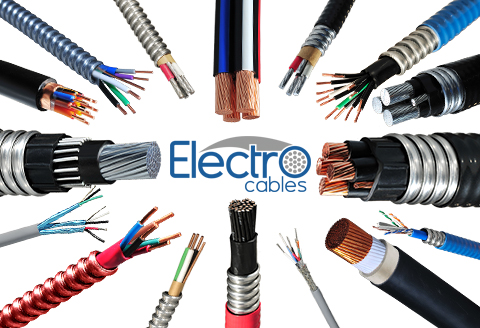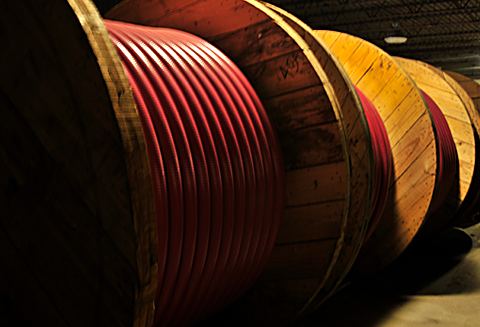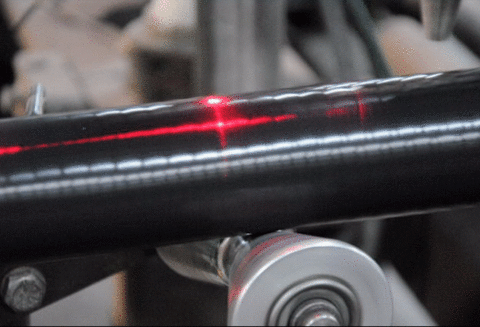A partner you can trust
8 Essential Tips for Choosing the Best Outdoor Electrical Cable for Your Next Project
When embarking on an outdoor project that requires electricity, selecting the right outdoor electrical cable is crucial for safety, functionality, and durability. With a plethora of options available on the market, it can be challenging to determine which type will best meet your specific needs. Whether you're planning to illuminate your garden, power outdoor devices, or set up extensive lighting for events, understanding the essential factors that influence your choice is key.

From assessing the cable's weather resistance to evaluating its gauge and capacity, making informed decisions will ensure that your project runs smoothly and remains safe from electrical hazards. In this blog, we will explore eight essential tips that will guide you in choosing the best outdoor electrical cable for your next project, helping you strike a balance between efficiency, safety, and longevity.
Understanding Different Types of Outdoor Electrical Cables and Their Applications
When planning any outdoor electrical project, understanding the different types of outdoor electrical cables and their applications is crucial. Outdoor cables are specially designed to withstand environmental conditions, ensuring longevity and safety. One of the most common types is the UF (Underground Feeder) cable, which is ideally used for subterranean installations. It is resistant to moisture and corrosion, making it perfect for garden lighting or outdoor outlets.
Another essential option is SOOW cable, which is flexible and durable, suitable for temporary outdoor power needs. This type of cable can endure extreme temperatures and is often used for outdoor generators or construction sites. When selecting outdoor electrical cables, consider factors like insulation type, voltage rating, and the specific application to ensure optimal performance.
A key tip when choosing the right cable is to always check for certifications and ratings that comply with local electrical codes; this guarantees safety in outdoor installations. Additionally, assess the length and gauge of the cable carefully to prevent performance issues, especially for long-distance applications. Choosing the right type of cable can truly make a difference in the success and safety of your outdoor electrical projects.

Identifying Key Factors for Selecting the Right Cable for Your Project
When selecting the right outdoor electrical cable for your project, identifying key factors is crucial. The first aspect to consider is the cable's insulation. Outdoor cables must have durable insulation that can withstand various weather conditions, including moisture, UV exposure, and extreme temperatures. Look for cables rated for outdoor use, such as those made with cross-linked polyethylene (XLPE) or polyvinyl chloride (PVC), which offer excellent protection against environmental stressors.
Another critical factor is the cable's ampacity, or its ability to carry current without overheating. Be sure to choose a cable that can handle the electric load of your project. To ensure safety and functionality, refer to the National Electrical Code (NEC) guidelines, which outline the ampacity ratings for various wire sizes. Additionally, consider the distance the cable will run. Voltage drop becomes a significant factor over long distances, so selecting a cable with a larger gauge can help maintain efficient power delivery.
Lastly, evaluate the specific environment where the cable will be installed. If the cable is exposed to chemicals or physical abrasion, ensure it has additional protective coatings. Opting for cables with further armoring or special sheathing can significantly prolong their lifespan and reliability in challenging outdoor settings.
8 Essential Tips for Choosing the Best Outdoor Electrical Cable
Common Problems with Using Inappropriate Outdoor Electrical Cables
When embarking on outdoor electrical projects, using inappropriate electrical cables can lead to several common problems, such as electrical shorts, overheating, and ultimately, equipment failure. Choosing the wrong type of cable can expose your machinery and structural installations to weather conditions, resulting in a significant risk of damage. For instance, standard indoor cables lack the necessary insulation and moisture resistance to endure outdoor elements, leading to potential hazards.
To ensure the success of your project, one essential tip is to select cables specifically designed for outdoor use. These cables are built to resist UV rays, moisture, and extreme temperatures. Another important consideration is to check the cable's ampacity rating, which should align with your project's power requirements to prevent overheating. Additionally, always prioritize durable materials to safeguard against physical damage, thus extending the life of your electrical installations. By following these tips, you can mitigate risks and enhance the safety and longevity of your outdoor electrical projects.
Maintenance Tips to Extend the Life of Your Outdoor Electrical Wiring
When it comes to outdoor electrical wiring, ensuring longevity and safety should be your top priority. One essential tip is to regularly inspect your cables for signs of wear and tear, such as fraying or cracking. Early detection of these issues can prevent more extensive damage and costly repairs. Additionally, ensure that all connections are securely fastened and protected from moisture, using weatherproof junction boxes when necessary.
Another key maintenance tip is to keep your wiring clean. Debris such as leaves, dirt, and snow can accumulate around the cables, trapping moisture and leading to corrosion. Gently cleaning the area around your cables not only keeps them functioning effectively but also enhances the overall safety of your outdoor electrical system. Lastly, consider using cable covers or conduits that provide additional protection against environmental elements, extending the lifespan of your outdoor electrical installations significantly.

Safety Considerations When Installing Outdoor Electrical Cables
When it comes to installing outdoor electrical cables, safety should always be the top priority. According to the National Electrical Code (NEC), selecting cables that are specifically rated for outdoor use is essential to prevent potential hazards. For instance, the use of UV-resistant cables ensures that they can withstand prolonged exposure to sunlight without degrading. Failure to use appropriate materials can lead to electrical failures and safety risks, with the National Fire Protection Association (NFPA) reporting that faulty electrical installations account for approximately 38% of residential fires.
Additionally, proper installation techniques play a crucial role in ensuring safety. The NEC recommends burying underground cables at a minimum depth of 24 inches to mitigate risks of accidental damage during landscaping projects or future construction activities. Furthermore, employing ground fault circuit interrupters (GFCIs) can significantly reduce the risk of electrical shocks, especially in damp environments. As a rule of thumb, conducting a thorough risk assessment and adhering to established guidelines not only guarantees safety but also extends the lifespan of outdoor electrical systems.

Products
Products
LEARN MORE
Current Inventory
Current Inventory
LEARN MORE
Custom Solutions
Custom Solutions
WE CAN HELPLighting Power & Control-Signal Cable
This content is restricted to site members. If you are an existing user, please log in. New users may register … LEARN MORE “Lighting Power & Control-Signal Cable”
LOOKING
FOR HELP?
We are here to help. You can contact us or create an account online to have access to special products, technical specifications and our new online quote tool.
ELECTRO CABLES
9 Riverside Drive
P.O. Box 276
Trenton, Ontario
CANADA K8V 5R5
N.A. Toll Free: 888-ELECTRO
(1-888-353-2876)
World: 613-394-4896
Fax: 613-394-4101
Email: sale@machinecables.com
We manufacture cables that are certified by the Canadian Standards Association (CSA), listed by Underwriters Laboratories and/or listed by Intertek (ETL).
Our quality management system is registered to ISO 9001: 2015. Our team is dedicated to consistently providing quality service and products to our customers.

© 2025 ELECTRO CABLES • SITE BY SNAP 360•



